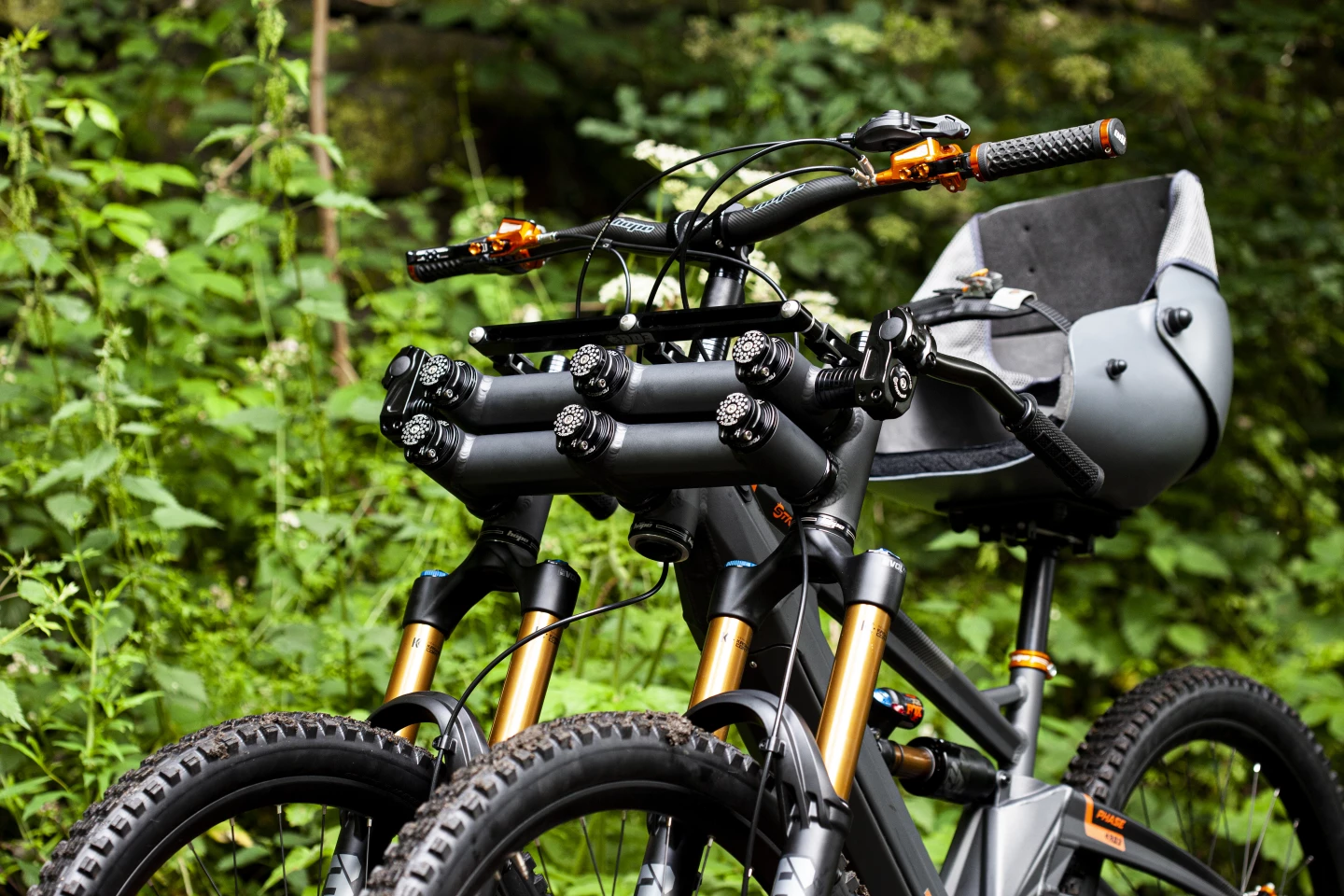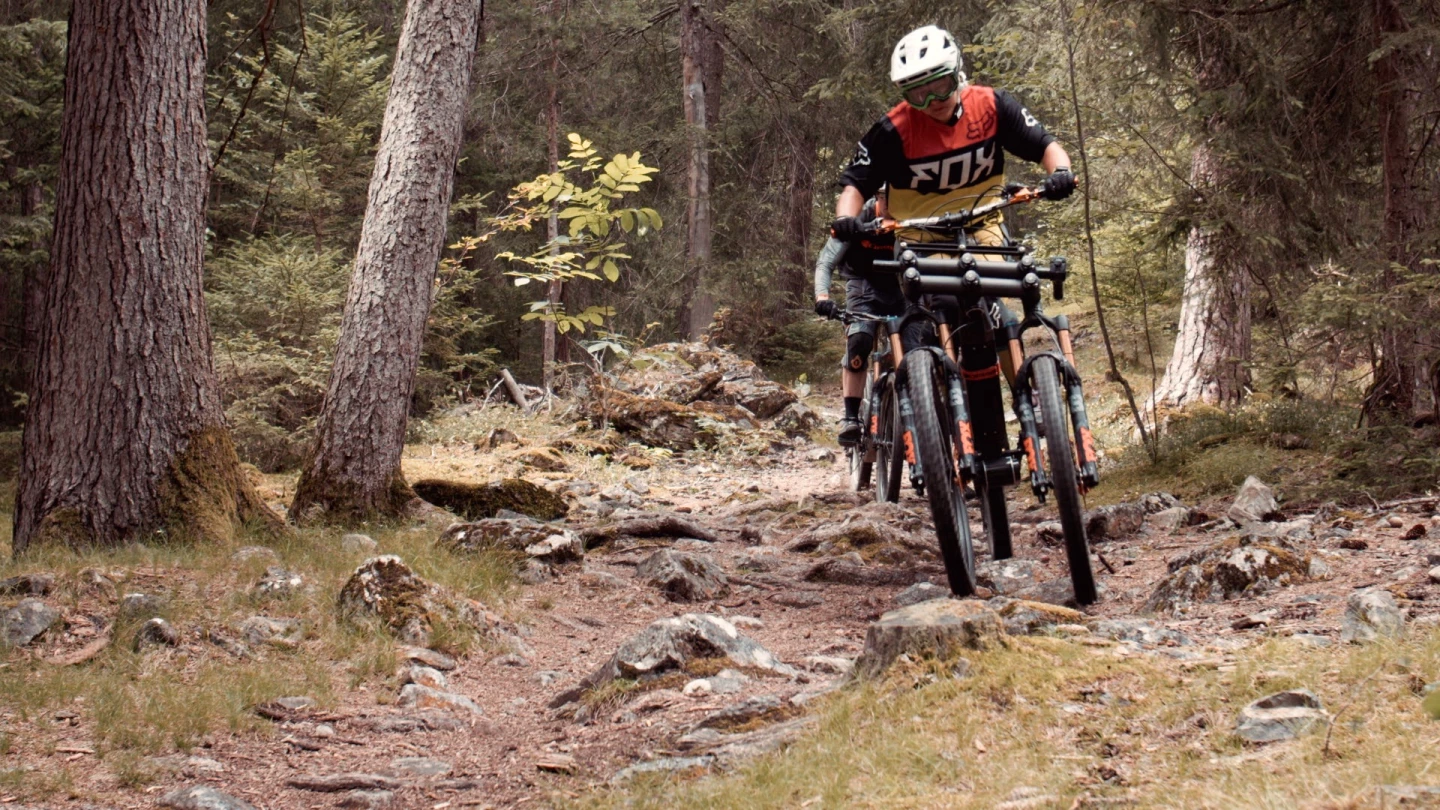After suffering a brain injury in 2015, pro mountain biker Lorraine Truong was left partially paralyzed – this meant she could no longer ride a conventional bicycle. She's now back in the "saddle" again, though, thanks to the cleverly designed Orange Phase AD3 eMTB.
Truong, who is also a mountain bike development engineer, began searching for an adaptive mountain bike after her injury occurred. Word of her quest reached British engineer Alex Desmond, who founded his own engineering and design company (DezmotoRacing Ltd) after having previously worked for firms such as Norton Motorcycles and Jaguar Land Rover.
Desmond had built multiple adaptive mountain bike prototypes over the past several years, one of which he brought to Truong to try out on her home trails in Switzerland. After seeing how well she took to the bike, staff from Orange Bikes Switzerland contacted their head office in the UK, which had already been hoping to support her return to cycling. Orange UK agreed to help bring that prototype to production, under the condition that Desmond come work for the company … which he readily agreed to.

Superficially reminiscent of the Rungu Juggernaut, the resulting Phase AD3 is based on Orange's existing Phase electric mountain bike. For increased stability and traction, though, it features two independently suspended front wheels which are steered together thanks to a special linkage designed by Desmond. That cantilever linkage also allows those wheels to independently lean into corners – without the outside wheel lifting off the ground – thus keeping the AD3 from tipping over when turning.
Truong sits in a bucket seat that boosts her core stability, so she can use her upper body to maintain balance both when stopped and while "throwing the bike around." Because of the limited functionality of her legs, she uses the AD3 purely in throttle mode, although it can also work as a pedal-assist bike.
"We are going to build these in small batches," Desmond tells us. "We are currently trying to understand the demand, so we know how many to make in the first batch […] We haven't yet signed off a single specification. The design is modular, which means we can offer personalization depending on requirements."

In the case of Truong's aluminum-framed bike, features include 27.5-inch wheels; a Box One 9-speed drivetrain; a Paradox Kinetics bottom bracket motor that produces about 150 Nm (111 ft lb) of torque; Hope Tech 3 V4 hydraulic disc brakes; plus Fox 38 suspension forks and a Fox Float X2 rear shock. The whole thing weighs about 30 kg (66 lb), although Desmond says that lighter builds are possible.
One charge of the down-tube-integrated 504-Wh lithium battery is claimed to be good for about 700 m (2,297 ft) of technical climbing, or around 25 km (16 miles) of trail riding – again, that's just in throttle mode. And importantly, the AD3's 350-mm (14-in) track width means that it can be ridden on most existing mountain bike trails.

Desmond says that the materials cost of the bike was approximately £17,000 (about US$23,295), but adds that this first AD3 was particularly highly specced, and that pricing has yet to be established for subsequent builds. In any case, Truong is very happy with what she got.
"I didn't want to ride an adaptive bike just to say I was riding, I wanted a bike that could give me the thrill of riding technical and challenging tracks, and could handle both natural single tracks and bike parks," she tells us. "The AD3 really is all I could hope for [...] The feeling I get when I ride is just like a normal bike and thanks to the bucket seat, my brain can cope with it all. I feel so lucky, it is hard to describe."
You can see her riding the bike, and hear more about how it came to be, in the video below.
Source: Orange Bikes via Pinkbike









